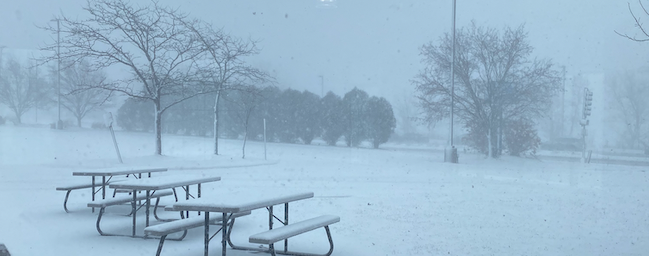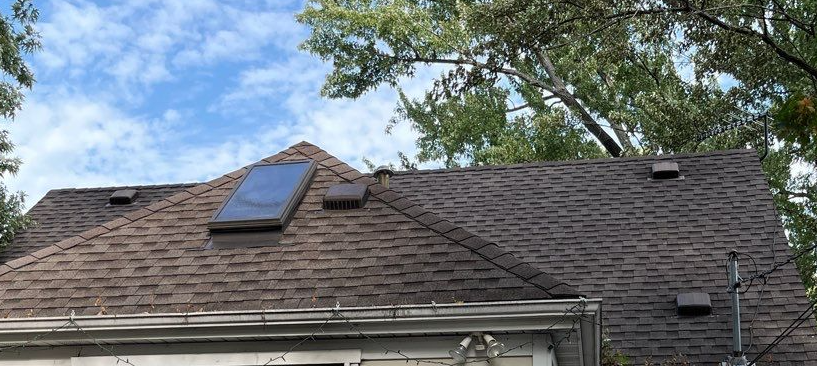Minnesota Winter Homecare: Old Man Winter is Knocking on the Door! Is Your House Ready?
It’s time to prepare for winter. Some of us don’t need reminders. Just walking out the door to your first below-zero temperature in the fall should be enough shock. Unfortunately, some laggards (even a certain Lindstrom employee with 30 years of experience!) need a bigger jolt, like an early fall snowstorm.
Older Minnesotans have the Halloween Blizzard of 1991 indelibly set in their minds. They have colorful stories of that day such as discovering lawn furniture, hoses, and other items in their back and front yards in the spring when the snow finally melted. The storm, which dumped nearly 30 inches of snow on the Metro, and 36 in Duluth took many by surprise. Those who did venture out to Trick and Treat with their kids that evening ended up carrying their wee little ones who couldn’t navigate the large drifts. It turns out our local meteorologists were caught by surprise like everyone else. Yes, Mother Nature can be very unpredictable.
Some of these same Minnesotans remember their parents telling tales of the “Armistice Day (now known as Veterans Day) Blizzard on November 11, 1940, which was another storm that came out of nowhere. This blog writer had a friend who owned an old wooden boat which he claimed was pressed into service to save hunters who were stranded south of Red Wing.
The late Gordon Lightfoot chronicled the sinking of the Edmund Fitzgerald in his fabled classic, “The Wreck of the Edmund Fitzgerald.” That happened on November 10, 1975. Even in recent years the “gales of November” have heaped huge damage on the touristy Canal Park area in Duluth. Folks, the point is, once we hit November anything can happen.
These unforgettable events should remind us to get our homes, vehicles, and boats ready for winter. The 1991 Halloween storm rendered outside maintenance an impossibility as early as November 1. Don’t delay! Hopefully, this year’s strong El Nino weather pattern will give you some mild weather opportunities to button things up this month if you haven’t already.

Pre-winter maintenance is essential to prevent water damage to your home. Water damage can be costly and lead to structural issues as well as mold, so taking steps to prepare for the winter can help protect your property. Here is a pre-winter maintenance checklist to prevent water damage:
- Clean Gutters and Downspouts: Ensure that your gutters and downspouts are free of debris, leaves, and dirt. Clogged gutters can cause water to overflow and seep into your home’s foundation or basement. Make sure the downspouts direct water away from the foundation.
- Make sure landscaping is directing water away from the foundation. This should be an annual inspection as the ground settles and rain coming off the roof can create trenches. Rodents and even digging dogs can do damage close to your foundation. Changes in landscaping sometimes result in water flowing back into the foundation rather than away. Make sure everything is graded accordingly to move water away from the house.
- Turn off outside water and blow out sprinkler systems: Many people moving in from warmer climates don’t realize that in this part of the country, water must be drained from outside water faucets and sprinkler lines. Even septic lines well below the ground are susceptible to freezing if there is no snow cover and temperatures plummet way below zero. Drain hoses and put them away for the winter. Faucet covers can be used for protection. Or, install freeze-proof faucets to reduce burst pipe risk.
- Inspect and Repair Roof: Examine your roof for any missing, damaged, or loose shingles. Replace or repair them as needed to prevent leaks. Check for any signs of water stains or mold in the attic, which can indicate a roof leak.

- Seal Cracks and Gaps: Inspect the exterior of your home for cracks and gaps, especially around windows and doors. Seal any openings with caulk or weatherstripping to prevent cold air and water from getting inside. Remember, you can’t caulk in freezing temperatures.
- Insulate Pipes: Insulate exposed water pipes, especially in unheated areas such as basements, crawlspaces, and attics. This helps prevent frozen pipes and potential water damage from them bursting.
- Service Your HVAC System: Have your heating, ventilation, and air conditioning (HVAC) system serviced before winter to ensure it operates efficiently. A well-functioning system helps maintain proper humidity levels and reduces the risk of water damage caused by condensation.
- Test Sump Pump: If you have a basement with a sump pump, test it to ensure it’s working properly. Clear the sump pit of debris and ensure the discharge line directs water away from the foundation.
- Inspect and Clean Chimney: If you have a fireplace or wood-burning stove, have the chimney inspected and cleaned to prevent water damage from leaks or chimney fires.
- Trim Tree Branches: Trim overhanging tree branches that could break under the weight of snow or ice and fall onto your home, potentially causing damage.

- Inspect Exterior Walls: Check your home’s exterior walls for cracks or damage in the siding or masonry. Repair any issues and consider applying a waterproof coating or paint to provide an additional layer of protection.
- Test and Insulate Windows: Test the seals and insulation around windows to ensure they are airtight. Use weatherstripping or apply plastic film to improve insulation.
- Check the Foundation: Check your home’s foundation for cracks or signs of moisture. Seal any cracks.
- Examine all water lines: Make sure there aren’t any cracks or wear and tear in the supply lines for your refrigerator and dishwasher. Also, check your washing machine and toilet water supply lines. When they fail, imagine your garden hose running full blast in your kitchen. Ask a plumber if it makes sense to install stainless steel, kinked lines. Plastic hoses are susceptible to cracks.
- Install a Water Alarm: Consider installing a water alarm in vulnerable areas such as basements or near refrigerator supply lines and water heaters. These alarms can alert you to leaks or flooding.
- Once snow has fallen try and remove it from areas close to the gutters to discourage ice dams. Move drifted snow away from the foundation to reduce the risk of excessive melting near the foundation. If ice dams do form remove them with steam. Or install heat coils at the end of the roof to eliminate ice build-up. Ice dam formation is evidence of a more significant problem which we hope to discuss next month.
Taking these precautions and performing pre-winter maintenance tune-ups can help protect your home from water damage during the cold months. It’s essential to address these issues before winter sets in to avoid more significant problems and expenses down the road. If water damage does occur, call Lindstrom Restoration 24/7/365 at 763-544-8761. Our professional, trained technicians can respond quickly to ensure that contents and structure are professionally dried out and your property is saved from the ravages of mold.



Leave a Reply